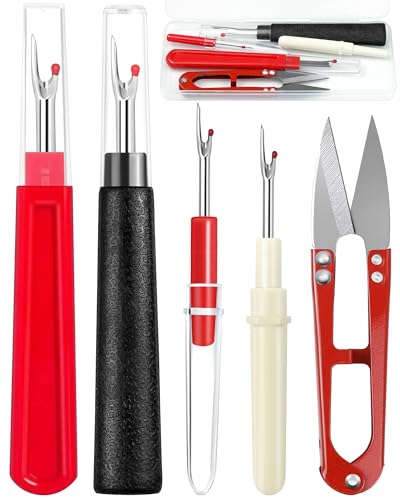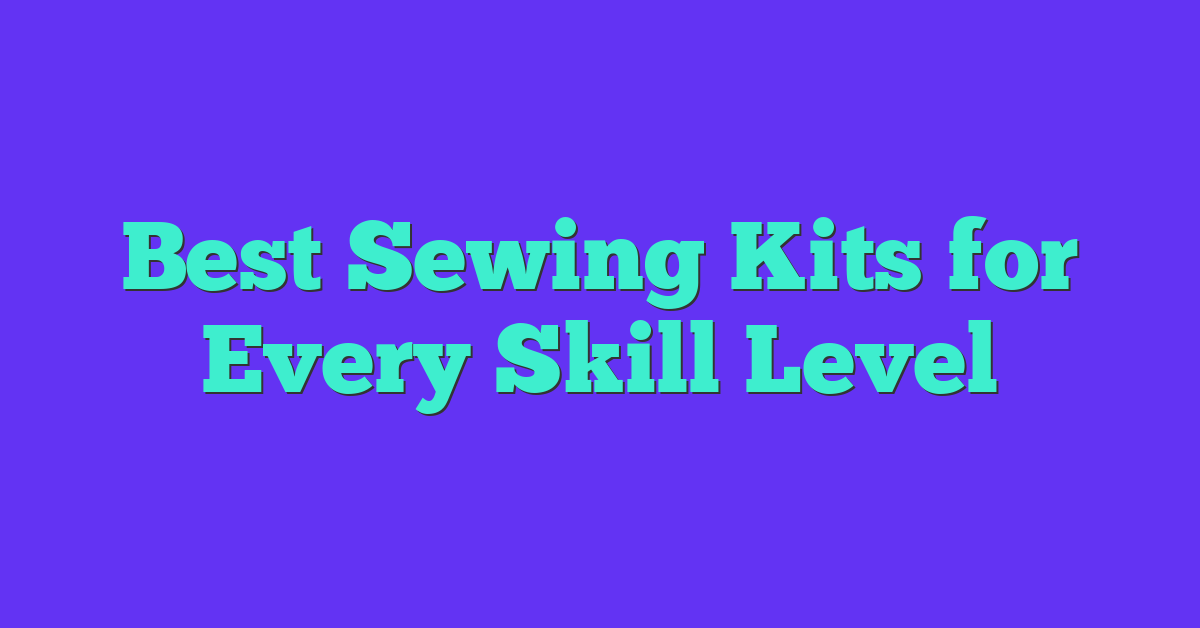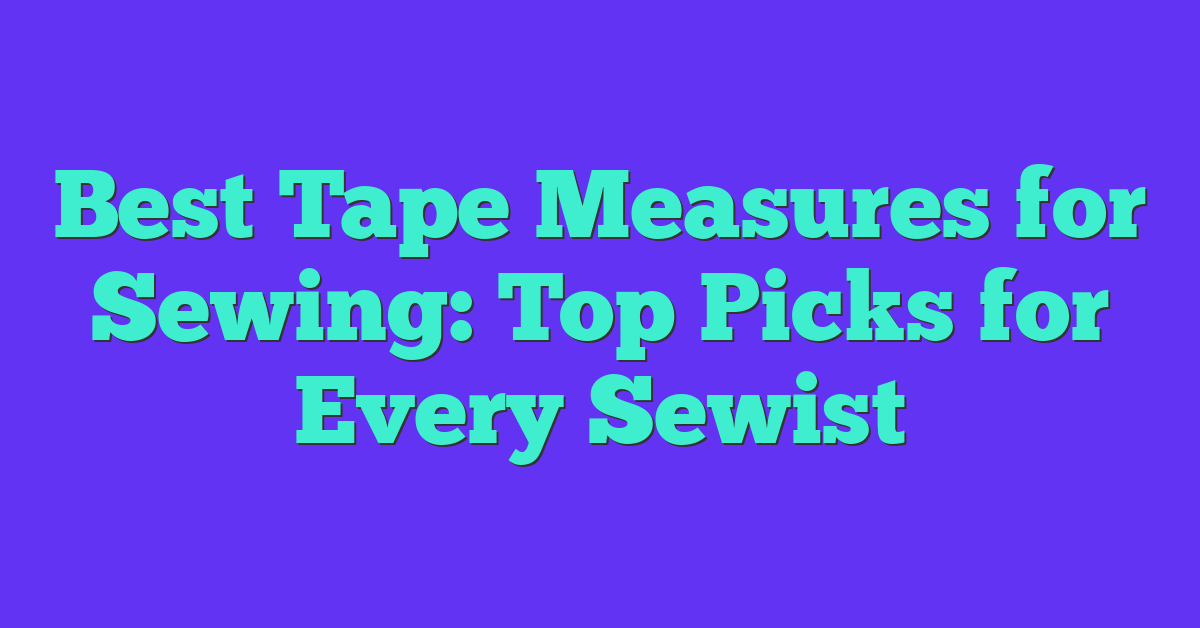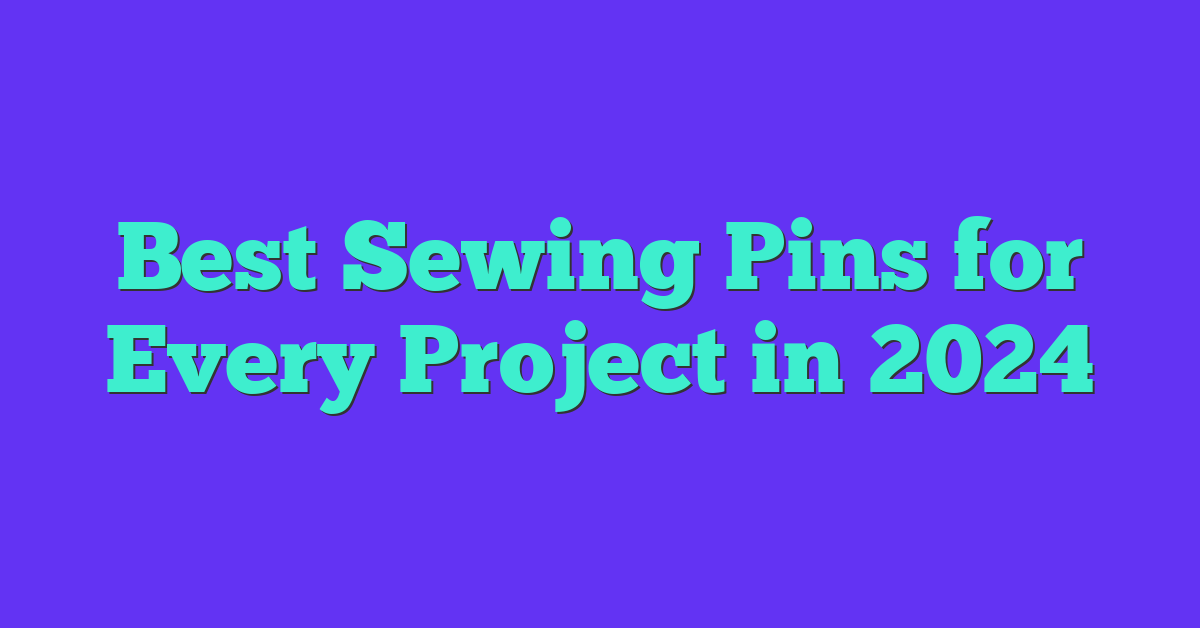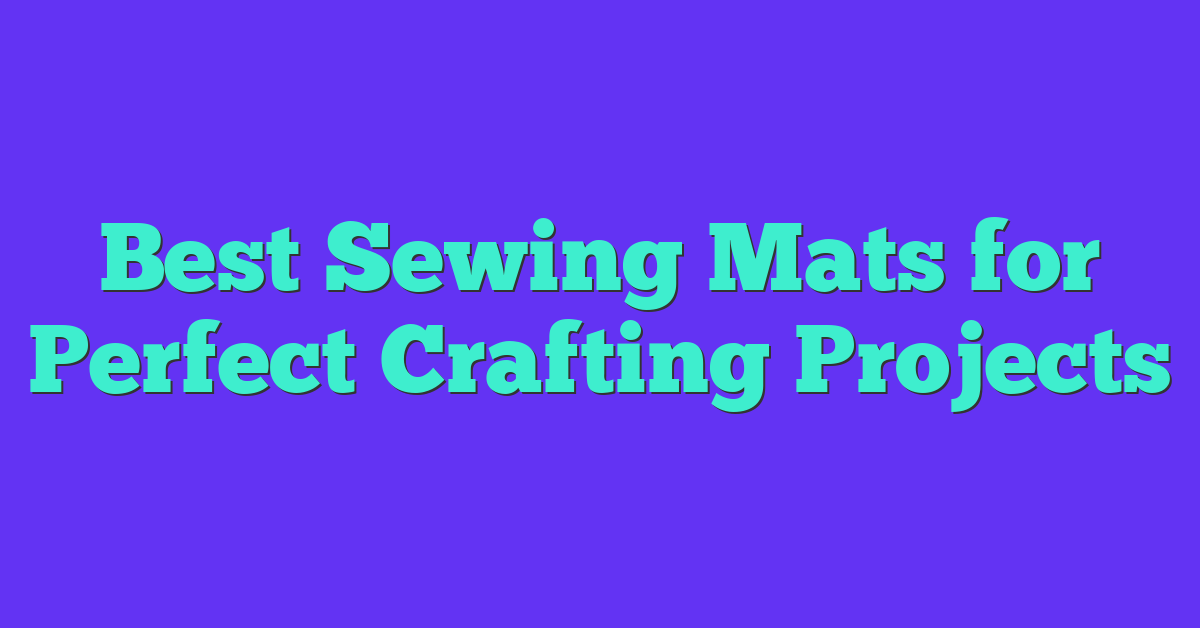As a sewing enthusiast, I know how important it is to have the right sewing machine for the job. With so many different types of sewing machines available, it can be overwhelming to choose the right one. From mechanical to computerized and embroidery to quilting, each type of sewing machine has its unique features and benefits.
Understanding the different types of sewing machines is the first step in making an informed decision. Mechanical sewing machines are the most basic type and are perfect for beginners. Electronic sewing machines are more advanced and offer a wider range of features, such as automatic needle threading and stitch selection. Computerized sewing machines take things a step further, with programmable stitch patterns and even the ability to connect to your computer for even more customization.
Whether you’re a beginner or an experienced sewist, there’s a sewing machine out there for you. By understanding the different types of sewing machines and their features, you can choose the right one for your needs and take your sewing skills to the next level.
Key Takeaways
- There are many different types of sewing machines to choose from, each with its unique features and benefits.
- Understanding the different types of sewing machines is the first step in choosing the right one for your needs.
- Whether you’re a beginner or an experienced sewist, there’s a sewing machine out there for you.
Understanding Sewing Machines
As a sewing enthusiast, understanding the different types of sewing machines available is essential. Whether you are a beginner or an experienced sewer, choosing the right sewing machine can make all the difference in the outcome of your project. In this section, I will provide an overview of sewing machines, including domestic and industrial sewing machines, and what to consider when selecting a machine for home use.
Sewing Machines
A sewing machine is a device that uses a needle and thread to stitch fabric together. Sewing machines can be manual or electric, and they come in various types, such as mechanical, computerized, and embroidery machines. Mechanical sewing machines are the most basic type and are operated by a foot pedal. Computerized sewing machines, on the other hand, are more advanced and come with features like LCD screens, automatic thread cutters, and programmable stitch patterns. Embroidery machines are specialized machines used for decorative stitching and can be standalone or attached to a sewing machine.
Domestic Sewing Machines
Domestic sewing machines are designed for home use and are suitable for sewing lightweight to medium-weight fabrics. They are available in mechanical or computerized models and come with a variety of features, such as adjustable stitch length and width, automatic buttonhole functions, and built-in thread cutters. When selecting a domestic sewing machine, consider factors like your sewing skill level, the type of fabrics you will be sewing, and the features you need to complete your projects.
Industrial Sewing Machines
Industrial sewing machines are designed for heavy-duty sewing and are commonly used in factories and production lines. They are built to handle thicker fabrics and can sew at high speeds. Industrial sewing machines come in various types, such as lockstitch, chainstitch, and overlock machines. When selecting an industrial sewing machine, consider factors like the type of fabrics you will be working with, the amount of sewing you will be doing, and the features you need to complete your projects.
Home Sewing Machine
A home sewing machine is a type of domestic sewing machine that is designed for home use. It is suitable for sewing lightweight to medium-weight fabrics and comes in various types, such as mechanical and computerized machines. When selecting a home sewing machine, consider factors like your sewing skill level, the type of fabrics you will be sewing, and the features you need to complete your projects.
In conclusion, understanding the different types of sewing machines available is essential for selecting the right machine for your sewing needs. Consider factors like your sewing skill level, the type of fabrics you will be working with, and the features you need to complete your projects when selecting a sewing machine.
Mechanical Sewing Machines
As a sewing enthusiast, I have used different types of sewing machines over the years. One of the most popular types of sewing machines is the mechanical sewing machine. This type of sewing machine uses mechanical parts to operate, making it a reliable option for many sewers. In this section, I will discuss the different types of mechanical sewing machines and their uses.
Treadle Sewing Machine
The treadle sewing machine is a type of mechanical sewing machine that is operated by a foot pedal. This type of sewing machine was popular in the 1800s and early 1900s. The foot pedal is connected to a flywheel that powers the machine. The treadle sewing machine is still used by some sewers today, especially those who prefer a more traditional approach to sewing.
Basic Sewing Machine
The basic mechanical sewing machine is a simple and affordable option for beginners and hobbyists. This type of sewing machine has manual controls, which means that the sewer has to adjust the settings manually. Basic mechanical sewing machines usually have a limited number of stitches and functions. However, they are reliable and easy to maintain.
Manual Sewing Machine
The manual sewing machine is another type of mechanical sewing machine. This type of sewing machine is operated by hand, which makes it a great option for sewers who want to have more control over their stitches. Manual sewing machines usually have fewer features and functions compared to other types of sewing machines. However, they are durable and can last for years with proper maintenance.
In conclusion, mechanical sewing machines are a great option for sewers who want a reliable and affordable sewing machine. The treadle sewing machine, basic sewing machine, and manual sewing machine are all types of mechanical sewing machines that offer different features and functions. As a sewing enthusiast, I highly recommend trying out a mechanical sewing machine to see if it fits your sewing needs.
Electronic Sewing Machines
I love using electronic sewing machines because they offer a lot of features that make sewing much easier. These machines are electronically operated, so they offer more options than mechanical sewing machines. They are perfect for sewers who want to experiment with different stitches and stitch lengths.
One of the best things about electronic sewing machines is that they have an LCD screen that displays all of the settings. This makes it easy to adjust the stitch length, width, and tension. Some machines even have touch screens that allow you to select stitches with the touch of a finger.
Another great feature of electronic sewing machines is that they are very quiet. They use a motor to control the needle, so there is no need to use a foot pedal. This makes sewing much more comfortable, especially if you have foot problems.
Electronic sewing machines come with a variety of different stitches, including decorative stitches, buttonhole stitches, and stretch stitches. Some machines even have embroidery capabilities, which allow you to create beautiful designs on your fabric.

Overall, I highly recommend electronic sewing machines for anyone who wants to take their sewing to the next level. They are easy to use, offer a lot of features, and are perfect for sewers of all skill levels.
Computerized Sewing Machines
I absolutely love using computerized sewing machines! They are a step up from the mechanical machines and offer a lot more features. They are perfect for those who want to take their sewing projects to the next level.
One of the biggest advantages of a computerized sewing machine is the LCD or touch screen. This feature allows you to easily select the stitch you want, adjust stitch width and length, and even program custom stitches. It’s so convenient to have all the information you need right at your fingertips.
Another great feature of computerized sewing machines is the ability to save stitch settings. This is perfect for those who frequently use the same stitch settings. You can save them and easily access them the next time you use the machine.
« Best Serger Sewing Machines for Home Use
Sewing Thread Sizes: Understanding the Basics »
One thing to keep in mind is that computerized sewing machines tend to be more expensive than mechanical machines. However, the added features and convenience make it worth the investment. Plus, they tend to last longer and require less maintenance.
Overall, if you’re serious about sewing and want a machine that can handle a variety of projects, a computerized sewing machine is definitely worth considering.
Embroidery Machines
As a sewing enthusiast, I know that embroidery machines can take your sewing projects to the next level. With an embroidery machine, you can add beautiful designs and patterns to your fabric creations. In this section, I will discuss two types of embroidery machines: Embroidery Sewing Machine and Computerized Embroidery Machine.
Embroidery Sewing Machine
An Embroidery Sewing Machine is a type of sewing machine that can sew and embroider at the same time. It comes with built-in embroidery designs and patterns, allowing you to add intricate designs to your fabric projects. These machines usually have a smaller embroidery area than computerized embroidery machines, but they are more affordable and easier to use.
One of the benefits of an Embroidery Sewing Machine is that it is versatile. You can use it for regular sewing projects, such as hemming pants or sewing a blouse, and then switch to embroidery mode to add a design to your project. Some Embroidery Sewing Machines also come with additional features, such as automatic thread cutting and needle threading, making it easier for beginners to use.
Computerized Embroidery Machine
A Computerized Embroidery Machine is a more advanced type of embroidery machine. It uses a computer to create designs and patterns, which are then stitched onto the fabric. These machines usually have a larger embroidery area than Embroidery Sewing Machines, allowing you to create bigger designs.
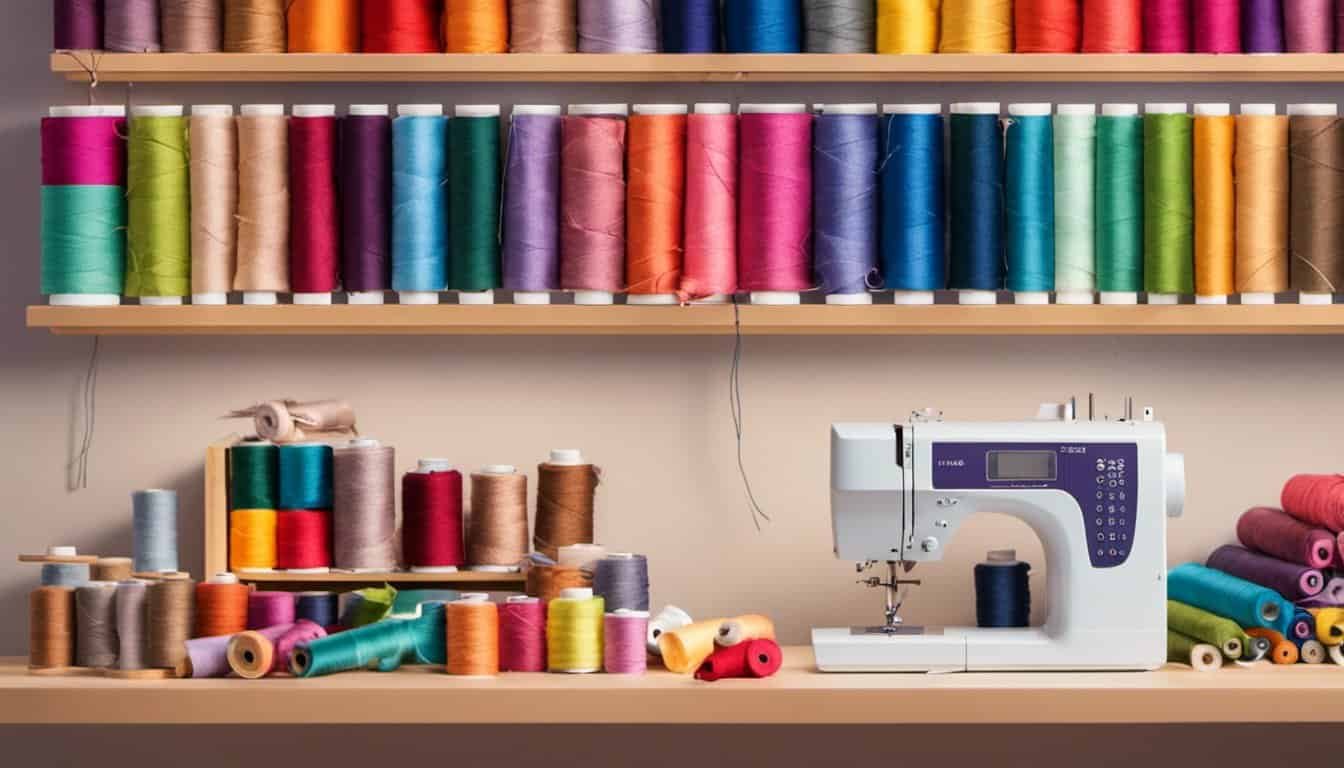
Computerized Embroidery Machines come with a wide range of features, such as built-in designs, USB ports for importing designs, and touch screens for easy navigation. They also have more advanced embroidery functions, such as automatic thread tension and thread trimming, making it easier to create intricate designs.
One of the benefits of a Computerized Embroidery Machine is that it can save time. With the computerized functions, you can create designs quickly and easily, without having to spend time manually stitching each design. However, they are more expensive than Embroidery Sewing Machines and require more skill to use.
In conclusion, both Embroidery Sewing Machines and Computerized Embroidery Machines have their own benefits and drawbacks. If you are a beginner or on a budget, an Embroidery Sewing Machine may be a better option for you. If you are experienced and want more advanced features, a Computerized Embroidery Machine may be worth the investment.
Quilting Machines
As a quilter, having the right machine can make all the difference in the quality and efficiency of your work. Quilting machines are specifically designed to handle the unique demands of quilting, including thicker fabrics, multiple layers, and intricate stitching patterns. In this section, I will discuss the features and benefits of quilting machines.
Quilting Sewing Machine
A quilting sewing machine is a type of machine that is specifically designed for quilting. These machines come in both mechanical and electronic models, and both have their own advantages.
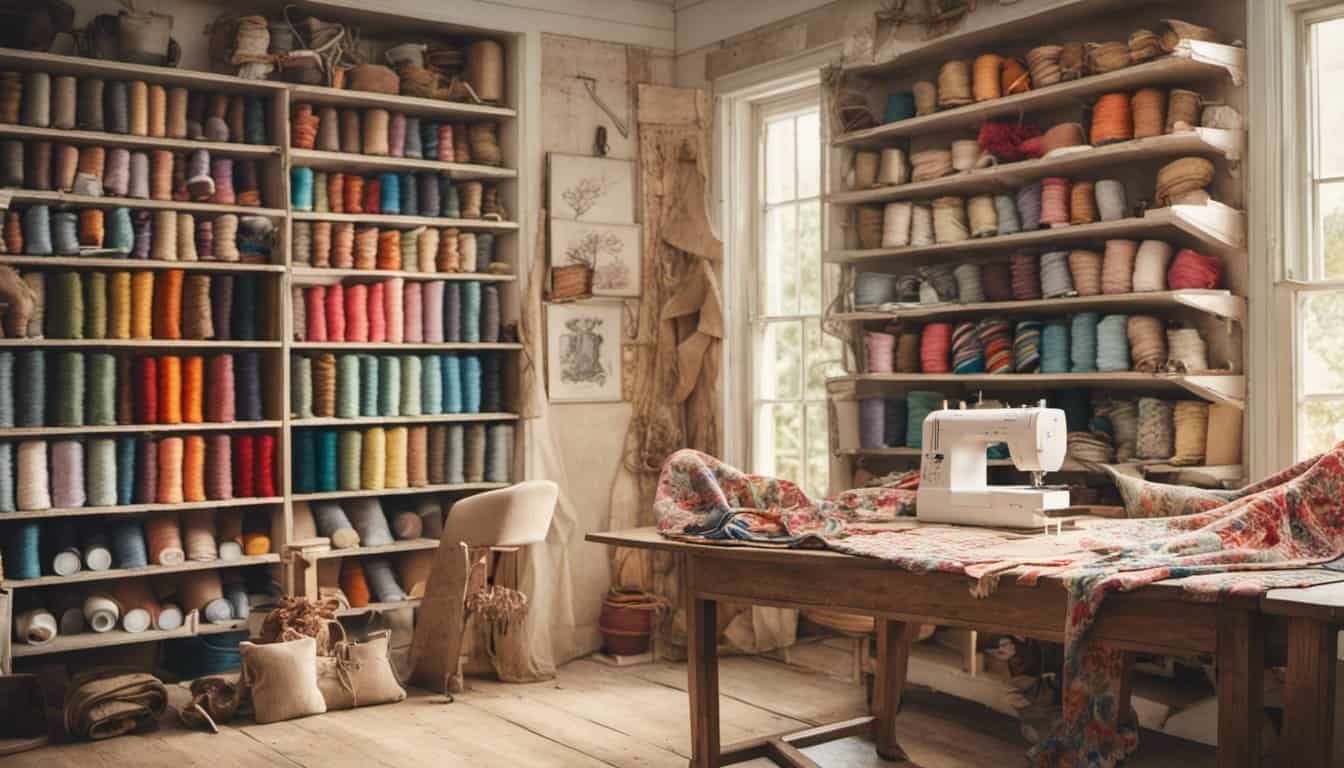
Mechanical quilting machines are often more affordable and easier to use, making them a great choice for beginners. They typically have fewer features than electronic models, but they are still capable of producing high-quality quilts.
Electronic quilting machines, on the other hand, offer a wide range of features and options, including automatic needle threading, programmable stitch patterns, and more. They are more expensive than mechanical models, but they are also more versatile and can save you time and effort in the long run.
When choosing a quilting sewing machine, consider the following factors:
- Throat space: The throat space is the distance between the needle and the body of the machine. A larger throat space allows you to work with larger quilts and more easily maneuver the fabric.
- Stitch options: Look for a machine with a variety of stitch options, including straight stitch, zigzag stitch, and decorative stitches.
- Feed dogs: The feed dogs are the teeth that move the fabric through the machine. Look for a machine with adjustable feed dogs, which can help you achieve more precise stitching.
- Speed control: A machine with speed control allows you to adjust the speed of the machine to match your skill level and the complexity of the project.
- Needle position: Look for a machine with adjustable needle position, which can help you achieve more precise stitching and make it easier to pivot the fabric.
Overall, a quilting sewing machine is a great investment for anyone who loves to quilt. Whether you are a beginner or an experienced quilter, a good machine can help you create beautiful, high-quality quilts in less time and with less effort.
Specialized Sewing Machines
If you’re looking for a sewing machine that can perform a specific task, then you might want to consider a specialized sewing machine. These machines are designed to perform a specific function and can be a great investment if you plan to do a lot of sewing in that area.
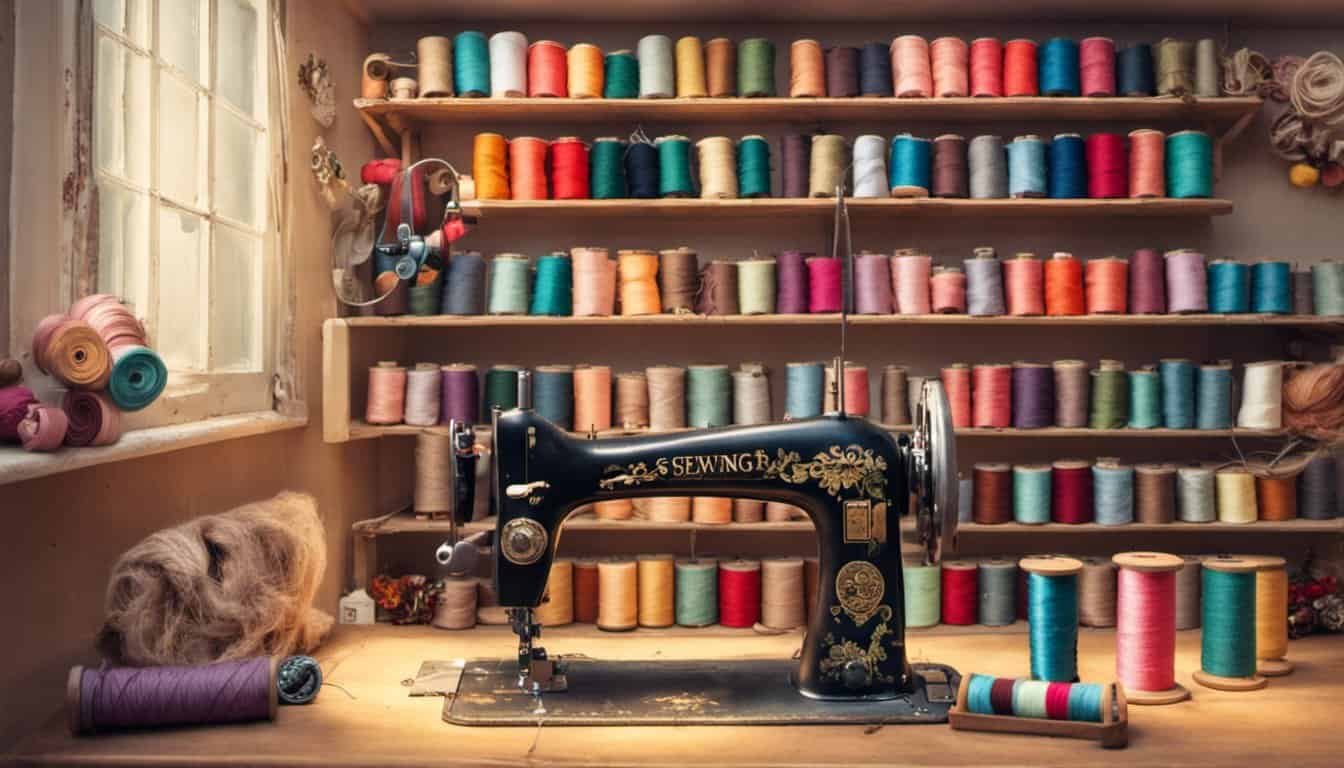
Serger Machine
A serger, also known as an overlock machine, is a specialized sewing machine that is used to create finished edges on fabric. It is particularly useful for sewing knits and stretchy fabrics, as it can create a clean, professional-looking finish that won’t unravel. A serger can also be used to create decorative edges and seams, and some models can even do coverstitching.
Overlock Machine
An overlock machine is similar to a serger, but it is designed to perform a wider range of functions. In addition to creating finished edges on fabric, it can also be used to sew seams and attach elastic. Some models can even do flatlock and rolled hem stitches.
Button Sewing Machine
If you do a lot of sewing that involves buttons, then a button sewing machine might be a good investment. These machines are designed to sew buttons onto fabric quickly and easily, without the need for hand sewing. They can also be used to attach snaps and other fasteners.
Bar Tack Sewing Machine
A bar tack sewing machine is a specialized sewing machine that is used to create strong, reinforced stitches. It is often used in industrial settings to sew on buttons, attach belt loops, and reinforce seams. Some models can even do automatic bartacks, which can save a lot of time and effort.
Overall, specialized sewing machines can be a great investment if you plan to do a lot of sewing in a specific area. Whether you’re sewing knits, attaching buttons, or reinforcing seams, there’s a specialized sewing machine out there that can help you get the job done quickly and easily.

Industrial Sewing Machines
When it comes to sewing machines, industrial sewing machines are a whole different ballgame. These machines are designed to handle high-volume sewing tasks and are built to last. They are typically larger and heavier than domestic sewing machines, and they can handle thicker fabrics and tougher materials.
One of the key features of industrial sewing machines is their speed. These machines can sew at a much faster rate than domestic sewing machines, which is essential for high-volume production. They are also designed to handle a wide variety of fabrics, from lightweight materials like silk and cotton to heavy-duty fabrics like leather and canvas.
Another important feature of industrial sewing machines is their durability. These machines are built to withstand heavy use and can last for many years with proper maintenance. They are also designed to be easy to use and operate, with simple controls and intuitive interfaces.
There are many different types of industrial sewing machines available, each with its own unique features and capabilities. Some of the most common types include:
- Single-needle lockstitch machines
- Double-needle lockstitch machines
- Overlock machines
- Coverstitch machines
- Blind stitch machines
- Buttonhole machines
- Button attaching machines
- Bartack machines
- Zigzag machines
- Walking foot machines
Each of these machines is designed for a specific task, and they can be used to create a wide variety of products, from clothing and accessories to upholstery and automotive interiors.

Overall, industrial sewing machines are an essential tool for anyone who needs to sew on a large scale. They are designed for speed, durability, and versatility, and they can help you create high-quality products quickly and efficiently.
Choosing a Sewing Machine
When it comes to choosing a sewing machine, there are a few things to consider. Whether you’re a beginner or an experienced sewer, there are different types of machines to suit your needs. Here are some things to keep in mind when buying a sewing machine:
Determine Your Budget
Before buying a sewing machine, it’s important to determine your budget. Sewing machines can range from budget-friendly to expensive, depending on the features and quality. If you’re on a tight budget, consider buying a used sewing machine or looking for sales and discounts.
Consider Your Sewing Needs
Think about what you’ll be using the sewing machine for. Are you a beginner looking to do basic sewing tasks, or are you a professional looking for a high-quality machine for advanced sewing projects? Different sewing machines have different features and capabilities, so it’s important to choose one that suits your needs.
Choose the Right Type of Sewing Machine
There are different types of sewing machines to choose from, including mechanical, electronic, and computerized machines. Mechanical machines are simple and budget-friendly, while electronic and computerized machines offer more advanced features and precision. Portable sewing machines are also available for those who need to move their machine around frequently.

Test the Machine
Before buying a sewing machine, it’s always a good idea to test it out first. This will give you an idea of how the machine works and whether it’s right for you. Look for a machine that is easy to use and has clear instructions.
In summary, when choosing a sewing machine, it’s important to consider your budget, sewing needs, and the type of machine that will work best for you. Always test the machine before buying it to ensure that it’s the right fit.
Sewing Machine Brands
When it comes to buying a sewing machine, there are many brands to choose from. In this section, I will discuss some of the most popular brands in the market, including Singer, Brother, Juki, and Baby Lock.
Singer
Singer is one of the most well-known brands in the sewing machine industry. They have been producing sewing machines for over 160 years and have a reputation for producing high-quality machines. Singer offers a wide range of machines, from basic models for beginners to advanced models for experienced sewers. Their machines are known for their durability, ease of use, and affordability.
Brother
Brother is another popular brand in the sewing machine industry. They offer a wide range of machines, including basic models for beginners and advanced models for experienced sewers. Brother machines are known for their reliability, ease of use, and affordability. They also offer a range of features, such as automatic threading and built-in stitches.
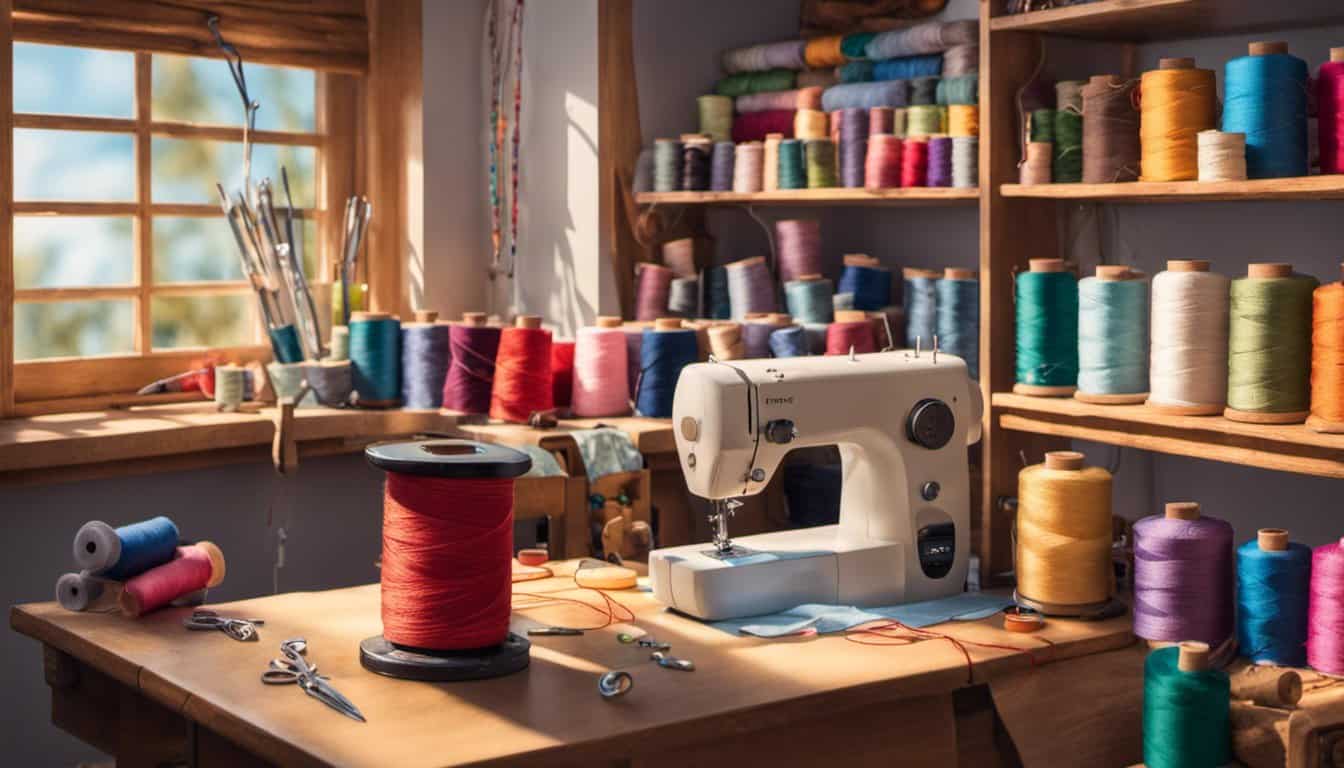
Juki
Juki is a Japanese brand that is known for producing industrial-grade sewing machines. They offer a range of machines for both home and professional use. Juki machines are known for their durability, speed, and precision. They are also known for their quiet operation and low maintenance.
Baby Lock
Baby Lock is a brand that is known for producing high-quality machines that are easy to use. They offer a range of machines, from basic models for beginners to advanced models for experienced sewers. Baby Lock machines are known for their versatility, precision, and ease of use. They also offer a range of features, such as automatic threading and built-in stitches.
In conclusion, when it comes to buying a sewing machine, there are many brands to choose from. Singer, Brother, Juki, and Baby Lock are some of the most popular brands in the market. Each brand offers a range of machines with different features and price points, so it’s important to choose the one that best suits your needs and budget.
Sewing Machine Accessories
When it comes to sewing, having the right accessories can make all the difference in the world. Here are some of the most important sewing machine accessories that I always keep on hand:
Bobbins and Bobbin Organizer
Bobbins are essential for every sewing project, as they hold the thread that creates the stitches. Make sure to have plenty of bobbins on hand, and keep them organized with a bobbin organizer. This will help you avoid wasting time searching for the right bobbin when you need it.

Presser Feet
Presser feet are attachments that fit onto the bottom of your sewing machine and help you achieve different sewing techniques. Some of the most common presser feet include:
- Zigzag foot
- Buttonhole foot
- Blind hem foot
- Overcasting foot
- Gathering foot
Make sure to choose the right presser foot for your project to ensure the best results.
Automatic Needle Threader
Threading a needle can be one of the most frustrating parts of sewing. An automatic needle threader can save you time and frustration by quickly and easily threading your needle for you.
Built-in Stitches
Many modern sewing machines come with a variety of built-in stitches, such as straight stitch, zigzag stitch, and decorative stitches. These stitches can help you achieve different effects and add interest to your projects.
Speed Control
Sewing at the right speed can make a big difference in the quality of your stitches. Look for a sewing machine with speed control so that you can adjust the speed to your liking.

Overall, having the right sewing machine accessories can make your sewing projects easier and more enjoyable. Make sure to invest in high-quality accessories that will last for years to come.
Frequently Asked Questions
What are the different features of sewing machines?
Sewing machines come with various features, including automatic needle threading, adjustable stitch length and width, built-in stitches, adjustable presser foot pressure, and more. Some machines also come with a free arm, which is useful for sewing cuffs, sleeves, and other small areas.
What are the main types of sewing machines and their uses?
There are several types of sewing machines, including mechanical, electronic, computerized, and embroidery machines. Mechanical machines are the most basic and affordable, while electronic machines have more features and are easier to use. Computerized machines are the most advanced and allow you to program custom stitches and designs. Embroidery machines are specialized machines that are used for embroidery work.
Which type of sewing machine is best for beginners?
For beginners, a mechanical sewing machine is a good choice. They are simple to use and affordable. Electronic machines are also a good option for beginners, as they have more features than mechanical machines but are still relatively easy to use.
What are the different types of domestic sewing machines?
Domestic sewing machines include mechanical, electronic, and computerized machines, as well as embroidery machines. Mechanical machines are the most basic and affordable, while electronic machines have more features and are easier to use. Computerized machines are the most advanced and allow you to program custom stitches and designs. Embroidery machines are specialized machines that are used for embroidery work.
What are the differences between electric and manual sewing machines?
Manual sewing machines are operated by hand and require more effort to use. Electric sewing machines are powered by electricity and are easier to use. They also come with more features and are more versatile than manual machines.
What are the prices of different types of sewing machines?
The prices of sewing machines vary depending on the type and brand. Mechanical machines are the most affordable, with prices ranging from $100 to $300. Electronic machines are more expensive, with prices ranging from $300 to $800. Computerized machines are the most expensive, with prices ranging from $800 to $2,000 or more. Embroidery machines are also expensive, with prices ranging from $500 to $5,000 or more.









